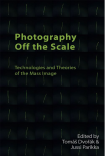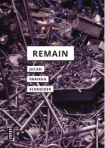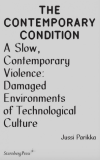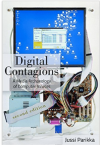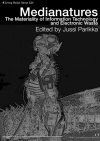Zombie Media in Leonardo
The circuit bended and definitely (re)modified fruits of our collaboration with Garnet Hertz are out. True, “Zombie Media” has been circulating as an unborn living dead text for a longer while, ever since it was part of the Transmediale 2010 Theory Award competition — but now it is finally officially out in Leonardo (vol. 45, no 5)!
Working with someone like Garnet is a pure joy, and demonstrates why collaboration is good for you: you learn a lot. A lot lot.
As a teaser to the longer “Zombie Media: Circuit Bending Media Archaeology into an Art Method”-article, please find below the short “manifesto” on “Five Principles of Zombie Media” we co-wrote for the Defunct/Refunct-catalogue (PDF).
———-
Zombie media addresses the living deads of media culture. As such, it is clearly related
to the earlier calls to investigate “dead media” by Bruce Sterling and others: to map
the forgotten, out-of-use, obsolete and declared dysfunctional technologies in order
to understand better the nature of media cultural development. And yet, we want to
point to a further issue when it comes to abandoned media: the amount of discarded
electronic media is not only the excavation ground for quirky media archaeological
interests, but one of the biggest threats for ecology in terms of the various toxins they
are leaking back to nature. A discarded piece of media technology is never just discarded
but part of a wider pattern of circulation that ties the obsolete to recycling centers,
dismantling centres in Asia, markets in Nigeria, and so forth – a whole global political
ecology of different sorts where one of the biggest questions is the material toxicity of
our electronic media. Media kills nature as they remain as living deads.
Hence, we believe that media archaeology – the media theoretical stance interested
in forgotten paths and quirky ideas of past media cultures – needs to become more
political, and articulate its relation to design practices more clearly. We are not the only
ones that have made that call recently – for instance Timothy Druckrey writes:
“The mere rediscovery of the forgotten, the establishment of oddball paleontologies, of
idiosyncratic genealogies, uncertain lineages, the excavation of antique technologies or
images, the account of erratic technical developments, are, in themselves, insufficient to
the building of a coherent discursive methodology.” [2]
We would want to add that in addition to developing discursive methodologies, we
need to develop methodologies that are theoretically rich as well as practice-oriented –
where ontologies of technical media meet up with innovative ideas concerning design
in an ecological context.
As such, the other part of the zombie media call is the work of reappropriation
through circuit bending and hardware hacking methodologies – to extend the media
archaeological as well as ecosophic interest into design issues. By actively repurposing
things considered dead – things you find from your attic, the second hand market, or
amongst waste – the zombiefication of media is to address the planned obsolescence of
media technologies which is part of their material nature. In reference to contemporary
consumer products, planned obsolescence takes many forms. It is not only an ideology,
or a discourse, but more accurately takes place on a micropolitical level of design:
difficult to replace batteries in personal MP3 audio players, proprietary cables and
chargers that are only manufactured for a short period of time, discontinued customer
support, or plastic enclosures impossible to open without breaking them. Whether you
can open up things – the famous black boxes of media culture characterized by iPhones
and iPads – is one of the biggest political and ecological questions facing our media
theory and practices too.
As a manifesto, five points of zombie media stand out:
1/ We oppose the idea of dead media. Although death of media may be useful as a tactic to
oppose dialog that only focuses on the newness of media, we believe that media never
dies. Media may disappear in a popular sense, but it never dies: it decays, rots, reforms,
remixes, and gets historicized, reinterpreted and collected. It either stays as a residue
in the soil and in the air as concrete dead media, or is reappropriated through artistic,
tinkering methodologies.
2/ We oppose planned obsolescence. As one corner stone in the mental ecology of
circulation of desires, planned obsolescence maintains ecologically unsupportable
death drive that is destroying our milieus of living.
3/ We propose a depunctualization of media and the opening, understanding and hacking
of concealed or blackboxed systems: whether as consumer products or historical
archives.
4/ We propose media archaeology as an artistic methodology that follows in the traditions
of appropriation, collage and remixing of materials and archives. Media archaeology
has been successful in excavating histories of dead media, forgotten ideas, sidekicks and
minor narratives, but now its time to develop it from a textual method into a material
methodology that takes into account the political economy of contemporary media
culture.
5/ We propose that reuse is an important dynamic of contemporary culture, especially
within the context of electronic waste. “If it snaps shut, it shall snap open.” We agree in
that open and remix culture should be extended to physical artifacts.
-
November 19, 2012 at 9:21 amDowntime « Machinology
-
November 28, 2012 at 11:31 pmWe Are The Zombies, Not the Machines « CHIPFLIP
-
July 2, 2013 at 12:01 pm| Ben Hammersley's Dangerous Precedent
-
July 9, 2014 at 2:20 amReFunct Media: thingWorld, China | Parsons ParisParsons Paris
-
June 21, 2016 at 12:29 amREFUNCT MEDIA: THINGWORLD. CHINA – Art, Media & Technology
-
September 4, 2016 at 2:59 pmZombie Media Manifesto – Circuit Breakers!
-
September 5, 2016 at 2:51 pm5 Points of the Zombie Media Manifesto – Circuit Breakers!
-
August 18, 2017 at 5:57 pm“Zombie Media”, as defined by Jussi Parikka: Zombie… – Near Future Laboratory
-
November 29, 2020 at 1:44 pmZombie Media Art – Media Archaeology as Art Methodology – 李炳曄 Ping Yeh Li



